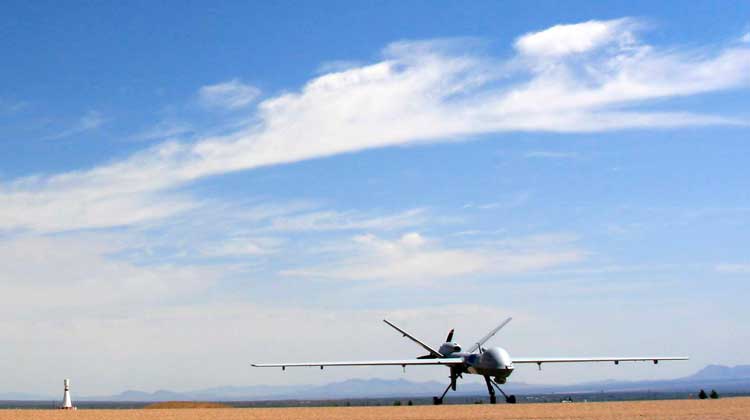
After more than a decade of Customs and Border Protection (CBP) drone use, a May 1 CATO Institute report recommends either discontinuing the program or curbing drone use to ensure Americans’ privacy.
“Drones have led to only 0.5 percent of apprehensions at a cost of $32,000 per arrest,” wrote David J. Bier and Matthew Feeney in Drones on the Border. “Their surveillance records the daily lives of Americans living along the border, and because CBP regularly uses its drones to support the operations of other federal agencies as well as state and local police, its drones allow for government surveillance nationwide with minimal oversight and without warrants.”
On expense, the report notes the $17 million cost for a Predator B drone and $12,255 per-hour flight cost—$255 million, according to the Government Accountability Office, from 2013 to 2016.
“[T]he Government Accountability Office found that drones detected only 21,384 suspected border crossers from 2014 to 2016,” the report said. “Yet during this time, the U.S. Border Patrol apprehended 1.2 million people while an estimated 570,000 evaded capture.”
Not only does this indicate drones detect just 1.2 percent of illegal crossings, the $32,000 drone apprehension cost is more than three times the $9,000 apprehension cost average.
In addition to cost, privacy concerns are tantamount.
“The CBP may establish its standards for surveillance and conduct operations without a court order or even suspicion that those under surveillance have committed a crime, thereby allowing the CBP to freely use its surveillance authority to collect information on the lives of law-abiding U.S. residents inside the United States,” the report said. “The quality of the drone footage and the long distances from the physical border where drones often operate considerably amplify this concern.”
The report noted, however, that urban centers are off limits to Predator B drones, and they may not monitor First Amendment-protected practices.
Another concern posited in the report was CBP drone use by other agencies.
“From 2013 to 2016, only about half of CBP drone flight hours were actually in support of Border Patrol,” the report said. “The cooperation between CBP and other federal agencies means that Americans living near the border aren’t the only ones who risk having their privacy infringed by CBP drones.”
The authors recommended CBP drone operations should stay within five miles of the border, and pilots should comply with legislation pertaining to such surveillance, particularly provisions regarding warranted searches.
Other recommendations included disclosure of surveillance capabilities—what kind of data is collected and how it is used. Authors also emphasized that any type of facial recognition capability is a serious threat to Americans’ personal privacy.
“China and other authoritarian countries have already begun to use drones to conduct domestic suspicionless surveillance, including of protesters and dissidents,” the report concluded. “The United States should put in place safeguards to prevent similar actions here.”
(Coincidentally, FCW.com reported May 2 that the Department of Homeland Security (DHS) plans tests of drone aircraft capable of everything from tracking vehicles to facial identification and a variety of data collection. The story stemmed from a DHS request at FedBizOps.gov.)
Read the entire CATO Institute report here.
© 2018 Homeland411
Sign up for our weekly newsletter here.